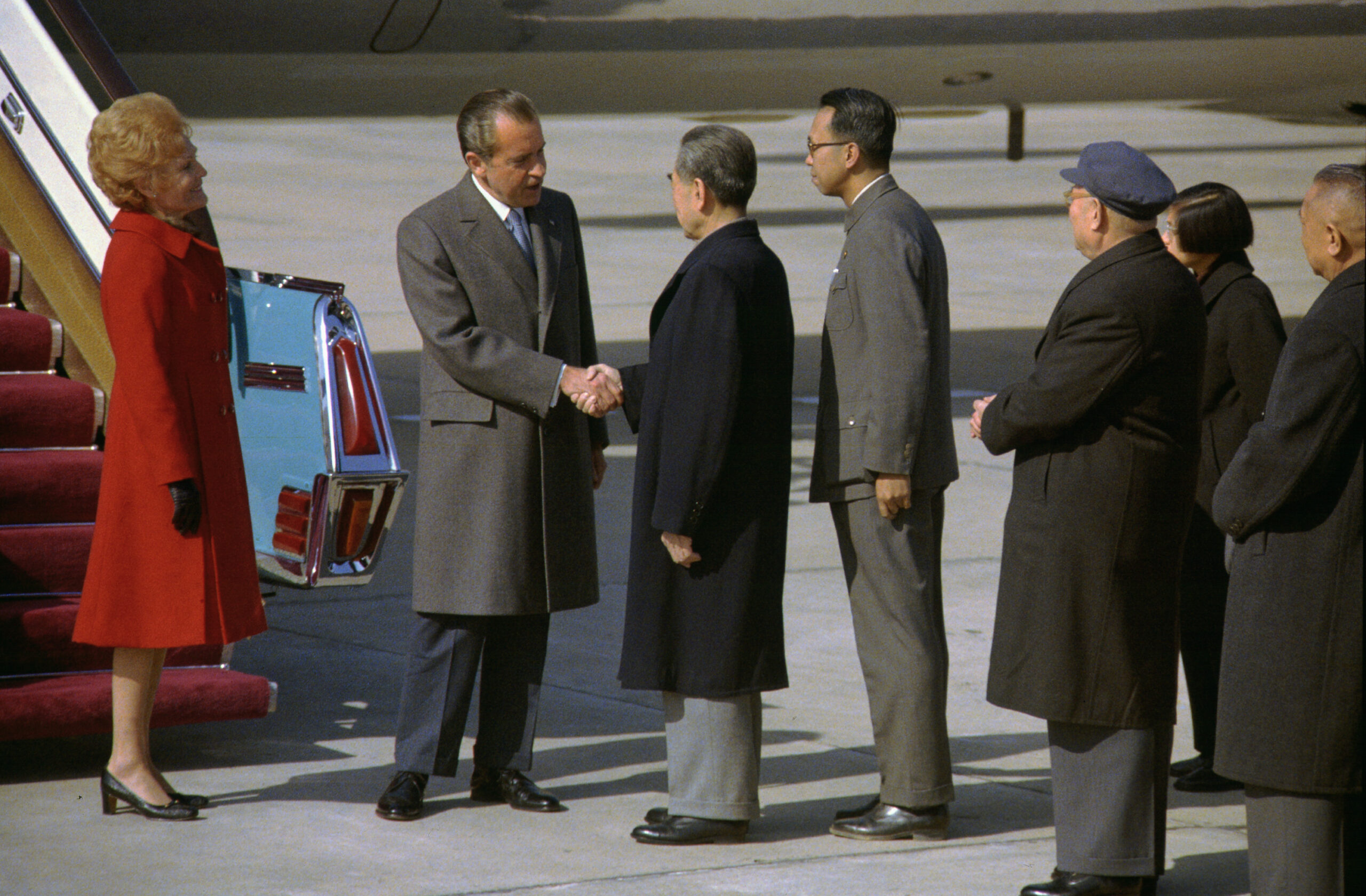Washington D.C. – President Felonious Punk’s explosive accusation on Friday, May 30, that China has “TOTALLY VIOLATED ITS AGREEMENT WITH US” regarding a fragile, two-week-old trade truce has once again plunged U.S.-China relations into turmoil. As threats of renewed tariffs fly and both nations reportedly engage in new restrictive trade measures, this latest flare-up raises a critical question: Is the current U.S. administration, in its confrontational approach, fundamentally misreading a global power with centuries of distinct cultural and diplomatic traditions? The contrast with past American diplomatic successes, like President Nixon’s historic opening to China, could not be starker.
The immediate casus belli is the mid-May “Geneva Agreement,” a 90-day pact where both nations agreed to roll back punitive tariffs – the U.S. from as high as 145% to 30%, and China from 125% to 10% – and, crucially from the U.S. perspective, for Beijing to resume unimpeded exports of critical rare earth minerals. Now, U.S. officials, including Trade Representative Jamieson Greer, assert China is “slow-rolling” this compliance, particularly on rare earths and by failing to remove other non-tariff barriers like company blacklisting. This has been met by swift U.S. countermeasures, with reports indicating Washington “this week” preemptively paused export licenses for critical American technologies to China, including semiconductor design software and aviation components.
The Chinese Embassy, through spokesperson Liu Pengyu, has fired back, accusing the U.S. of its own “abuse of export control measures” and urging Washington to “correct its erroneous actions” to uphold the Geneva consensus. Beijing also clarified that its rare earth export licensing applies globally and is an inherently complex, slower process than perhaps anticipated by U.S. negotiators.
This rapid descent into renewed hostility, with senior Punk administration adviser Stephen Miller warning of a “broad range of options to hold China accountable,” stands in sharp relief to moments of past U.S. diplomatic acumen. Many recall President Nixon’s 1972 visit to Beijing – a meticulously planned, “genius piece of negotiating” that ended decades of mutual isolation. That historic opening was predicated on a willingness to understand and navigate profound ideological and cultural differences, seeking common ground for strategic ends. It was a diplomatic understanding that, as Nixon put it, communication was vital to mitigate “suspicion and miscalculation.”

Today, some observers question if the U.S. team possesses a similar depth of understanding. China, despite its dazzling modernization and urban landscapes, remains a civilization deeply rooted in centuries-old traditions. While Beijing’s skyscrapers pierce the clouds, life for vast populations outside these metropolises, and the underlying cultural software of the nation, often reflects an enduring continuity. Traditional Chinese cultural values – Confucian principles of hierarchy and harmony, collectivism, the paramount importance of “face” (avoiding public embarrassment and maintaining dignity), a long-term strategic orientation, and a preference for indirect communication and patience – continue to shape social interactions and, critically, international negotiating styles.
Experts on Chinese diplomacy consistently highlight these traits: a holistic approach where “nothing is agreed until everything is agreed,” a focus on building relationships before substantive talks, and a strategic patience that can seem like intransigence to Western counterparts accustomed to more transactional, rapid-fire negotiations. President Punk’s characteristic style – public ultimatums, aggressive rhetoric (“So much for being Mr. NICE GUY!”), and a demand for immediate, visible concessions – could be profoundly counterproductive when dealing with such a negotiating culture. What U.S. officials decry as “slow-rolling” or “non-compliance” might, from a Chinese perspective, be a predictable response to perceived public pressure, an attempt to save face, or a reflection of complex internal consensus-building processes that the U.S. side either fails to appreciate or chooses to ignore.

The current U.S. administration, through its White House fact sheets, frames its approach as a necessary corrective to past U.S. “leniency,” asserting that China only responds to an “uncompromising stance.” Treasury Secretary Scott Bessent, while admitting current talks are “stalled,” still expresses confidence that “the Chinese will come to the table when President Trump makes his preferences known.” Yet, this confidence appears to overlook the possibility that the very methods being employed are exacerbating misunderstandings and hardening positions. The lack of a direct call between Presidents Punk and Xi Jinping since the Geneva talks, despite Punk suggesting one might occur, further hints at a disconnect at the highest levels.
If the U.S. negotiating team – colorfully described by one observer as potentially less effective than “a bucket of pandas” – fails to navigate these cultural and strategic depths, the cycle of accusation, retaliation, and escalating tension is likely to continue. The “art of the deal,” particularly with a power as complex and historically conditioned as China, requires more than just leverage; it demands a profound understanding of the other side’s worldview, values, and methods. Without such understanding, temporary truces will remain fragile, and comprehensive, lasting agreements elusive, to the detriment of both nations and the global economy that hangs in the balance. The “massive relief rally” that greeted the Geneva truce now seems a distant memory, replaced by renewed market jitters and the rising shadow of a trade war with no clear end in sight.
Discover more from Clight Morning Analysis
Subscribe to get the latest posts sent to your email.










